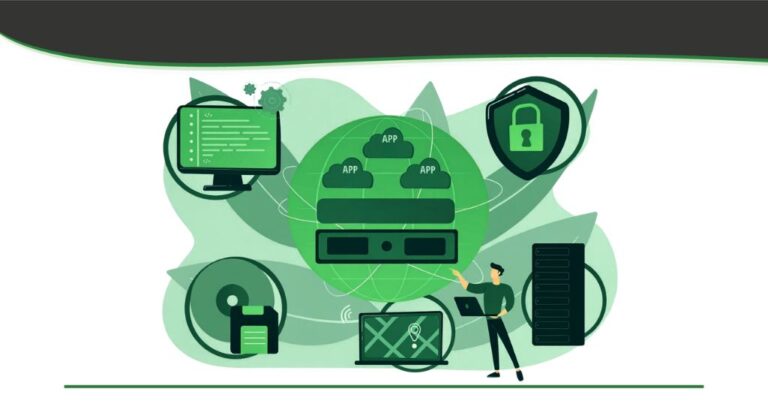In the digital age, passwords are the cornerstone of our online security. They act as the first line of defense, safeguarding sensitive data, financial information, and personal privacy. But as quantum computing advances, the encryption methods that protect passwords and other sensitive data are increasingly under threat. Quantum computers have the potential to break many of the cryptographic methods that keep our data safe today, exposing us to unprecedented cybersecurity risks. The solution? Post-Quantum Cryptography (PQC).
PQC is designed to create encryption algorithms capable of withstanding the computational power of quantum machines. As quantum computing begins to move from the realm of research into practical applications, it is crucial that businesses and individuals transition to quantum-resistant encryption methods to ensure their passwords and other sensitive data remain secure.
This article explores the evolution of encryption methods, the importance of encrypting passwords, and how PQC is shaping the future of digital security.
Why Encrypting Passwords is Vital
Passwords are one of the most common ways to authenticate users and protect sensitive data. Whether it’s an online banking account, social media, or a corporate system, passwords are used to ensure only authorized individuals gain access. However, with the rise of quantum computing, the cryptographic systems that secure these passwords could soon be vulnerable.
The Quantum Threat
In the quantum age, the encryption methods currently used to protect passwords could be cracked much faster than we could ever anticipate. If a sufficiently powerful quantum computer were to come online, it could easily decrypt passwords protected by traditional encryption algorithms. As quantum computing develops, our passwords could no longer be safe if we don’t implement stronger encryption.
Quantum-Resistant Encryption Methods
Several promising encryption methods are being developed to counteract the risks posed by quantum computing. These algorithms are designed to be resistant to attacks by both classical and quantum computers, ensuring that encrypted passwords remain secure for years to come. Below are some of the most notable encryption techniques within the realm of post-quantum cryptography.
- Lattice-Based Cryptography – Lattice-based cryptography is one of the most well-researched and promising areas of PQC. It is based on the mathematical hardness of lattice problems, which are extremely difficult for both classical and quantum computers to solve. Lattice-based schemes include algorithms like NTRU and Kyber, which are being considered for standardization by the National Institute of Standards and Technology (NIST).
These cryptographic methods are ideal for securing passwords because they provide robust encryption even in the face of quantum computing. They also offer efficient performance, which is crucial for protecting user passwords without slowing down applications. - Hash-Based Cryptography – Hash-based cryptography uses hash functions, which take input data and produce a fixed-size output, to create secure digital signatures. SPHINCS+ is an example of a hash-based cryptographic method that has shown resilience against quantum attacks. These cryptographic schemes do not rely on number-theoretic problems that quantum computers can easily solve, making them highly secure against quantum threats.
Hash-based cryptography is particularly valuable for ensuring the integrity of digital signatures used in password systems. Since hash functions are well-understood and can be optimized for speed, they provide an efficient solution to the encryption of passwords in the quantum era. - Code-Based Cryptography – Code-based cryptography, such as the McEliece encryption scheme, relies on error-correcting codes and has been studied for decades as a quantum-resistant alternative. The McEliece scheme has shown to be resistant to quantum attacks, making it a potential candidate for securing passwords in a post-quantum world.
While the McEliece system tends to produce larger key sizes than some other methods, it provides robust security and has withstood cryptanalysis attempts for many years, both by classical and quantum computers.
The Role of CNSA 2.0 in Quantum Security
The National Security Agency (NSA) has laid out a roadmap for transitioning to quantum-resistant encryption in national security systems through the Commercial National Security Algorithm Suite 2.0 (CNSA 2.0). This suite provides standards for cryptographic algorithms that will be secure against quantum threats, ensuring the continued safety of sensitive government data.
CNSA 2.0 includes a set of algorithms designed to protect data against the computational power of quantum machines. For instance, the suite includes lattice-based algorithms like ML-KEM (previously CRYSTALS-Kyber) for key establishment and ML-DSA (previously CRYSTALS-Dilithium) for digital signatures. Both of these algorithms are well-suited for securing passwords in the quantum age.
By adopting CNSA 2.0 standards, organizations can ensure that they are implementing quantum-resistant encryption methods that will safeguard their passwords from quantum decryption techniques.
Preparing for the Quantum Future
The rise of quantum computing is not a distant threat, it is happening now, and organizations need to start preparing for it. One of the most important steps is transitioning to quantum-resistant encryption methods to protect passwords.
Steps for Transitioning to PQC:
- Assess Current Cryptographic Infrastructure: Evaluate the encryption methods used to protect passwords and other sensitive data. Identify which methods are vulnerable to quantum attacks and begin the process of transitioning to more secure algorithms.
- Implement Post-Quantum Cryptographic Algorithms: Adopt PQC algorithms, such as lattice-based cryptography and hash-based cryptography, that are secure against both classical and quantum computers. This ensures that passwords will remain safe even in the face of quantum threats.
- Stay Informed on PQC Research: The field of PQC is still evolving, with new algorithms and techniques being developed. Organizations must stay informed about the latest advancements in PQC to ensure they are always using the most secure encryption methods.
- Monitor Developments in CNSA 2.0: The NSA’s CNSA 2.0 standards provide a clear roadmap for adopting quantum-resistant encryption methods. Organizations should align their cryptographic infrastructure with these guidelines to stay ahead of quantum threats.
The transition to post-quantum cryptography is not just a technical necessity, it’s a strategic imperative. Quantum computers have the potential to undermine the security of passwords and other sensitive data, and if we don’t take proactive measures, our digital lives will be at risk. By adopting PQC today, we can ensure the security of our passwords for tomorrow.
Organizations must act now to future-proof their data against quantum computing. Through careful planning, the implementation of quantum-resistant algorithms, and alignment with CNSA 2.0 standards, we can build a more secure digital future.


